HKJ
Flashaholic
[size=+3]Golisi O4 Smart charger[/size]
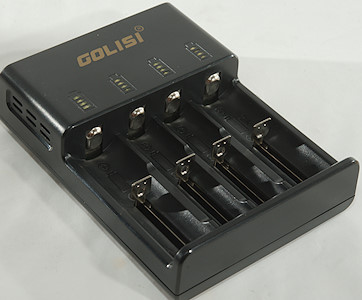
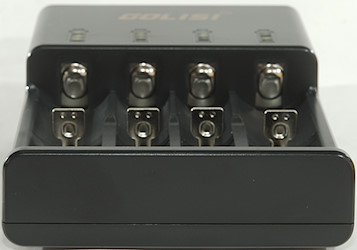
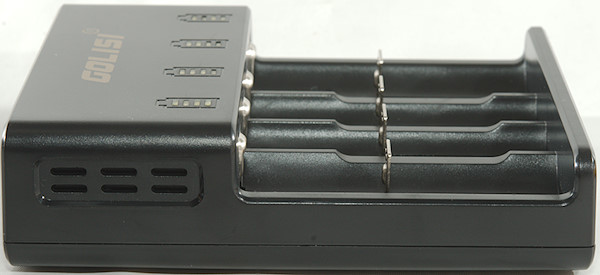
A simple 4 channel universal charger from Golisi.




It arrived in a cardboard box, with some specifications on.

Inside the box the charger was in a pouch.
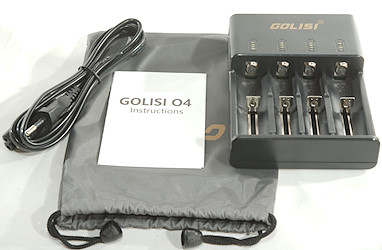
The box included the charger, a mains cable, a pouch and the instruction sheet.
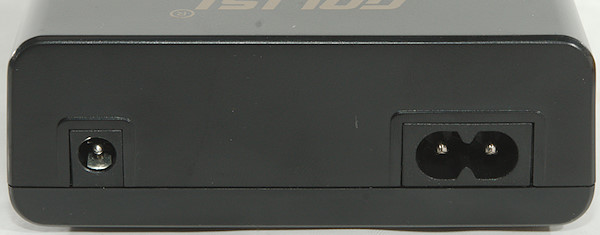
The charger has universal mains (110-240VAC 50/60Hz) and a 12V input on the back.

The user interface is four bars of 3 leds showing the charge state. When charging one led will flash and all will be lit steady when batteries are full.
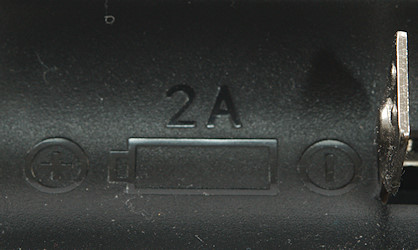
One slot is rated for 2A charge current, the other for 1A.

On the bottom of the charger there are specifications.
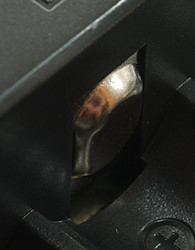
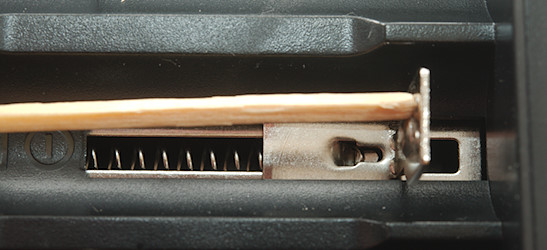
The slots uses the classical slider construction and it works fine.
The slots can work from 32mm to 71mm. This covers unprotected batteries, but some protected will be too long.
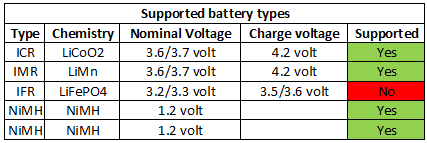
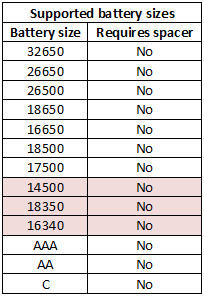
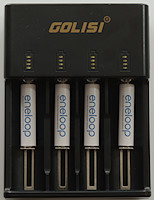
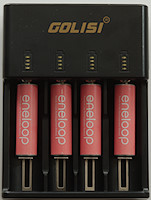
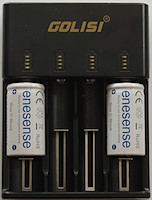
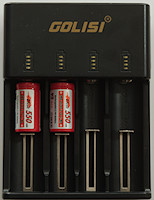
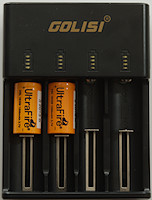
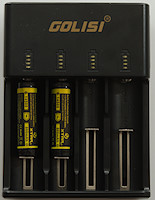
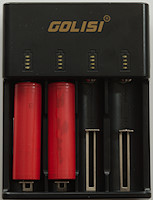
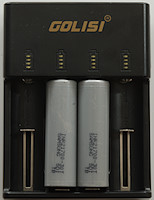
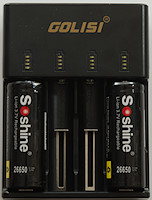
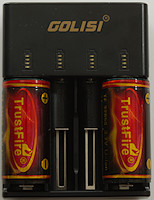
The charger can handle 70 mm long batteries including flat top cells.
The charge current for 1 cell is 1A in slot #1, #2 and #3, this is rather high for small cells (Slot #4 is 2A).
[size=+2]Measurements[/size]
[size=+1]Charging LiIon[/size]
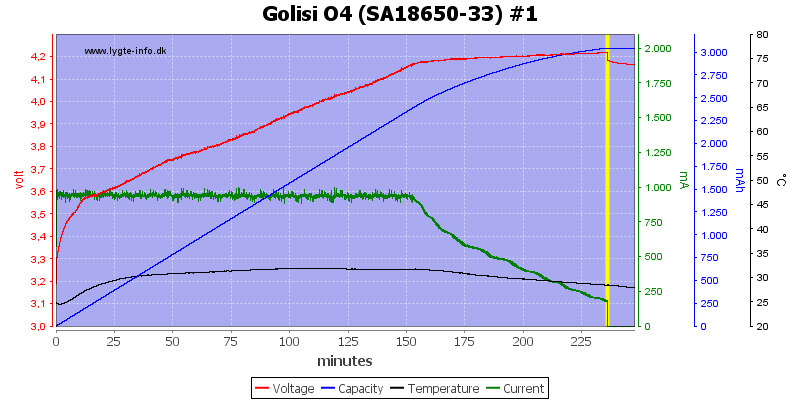
Slot #1 will charge with 1A when it and none or one other slot is used. The curve is a CC/CV with about 140mA termination.
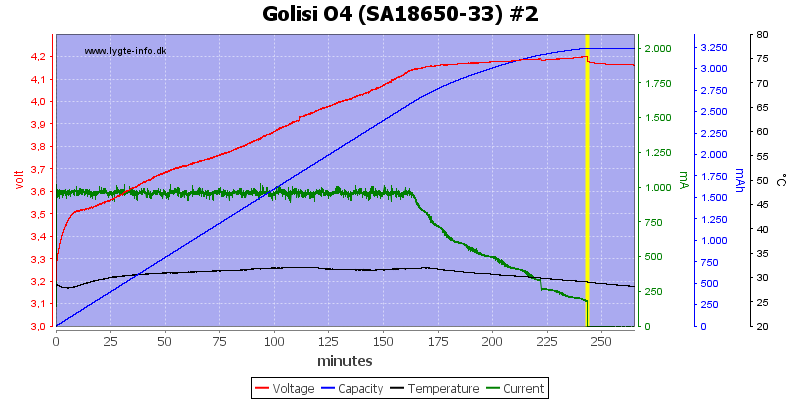
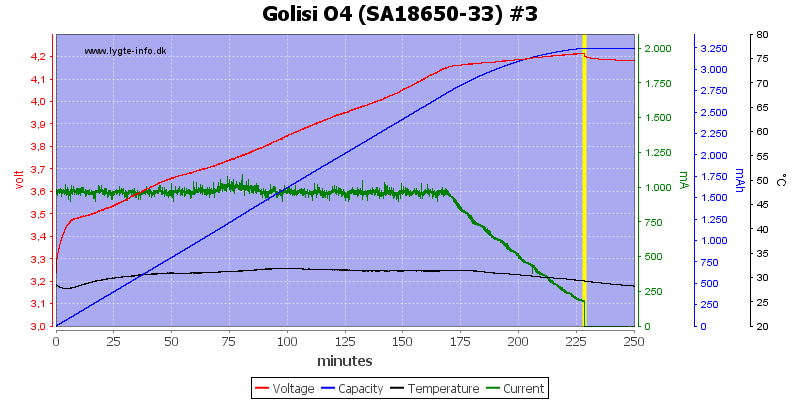
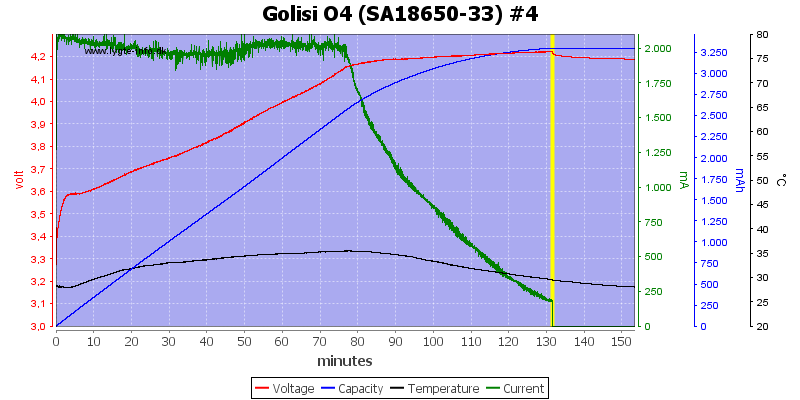
The next two slots looks similar with 1A current, the 4 slot uses 2A charge current.
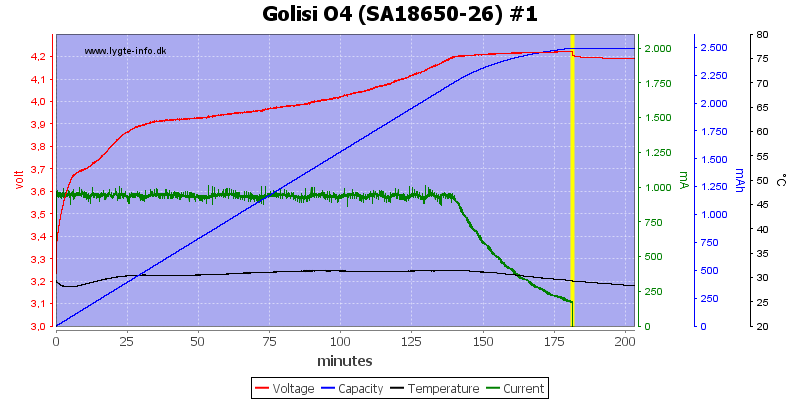
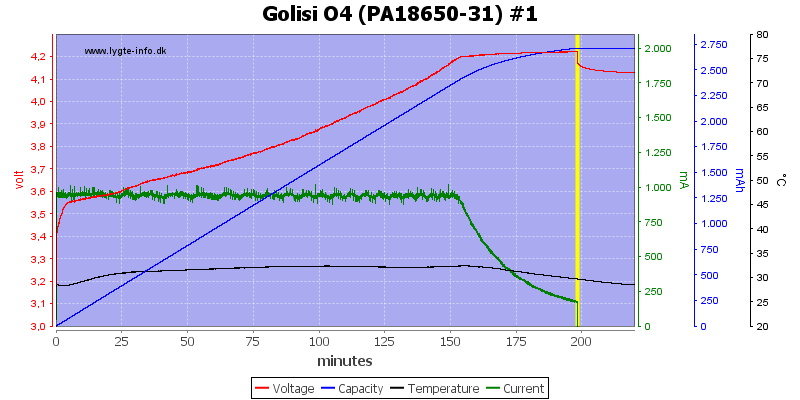
These two cells looks fine.
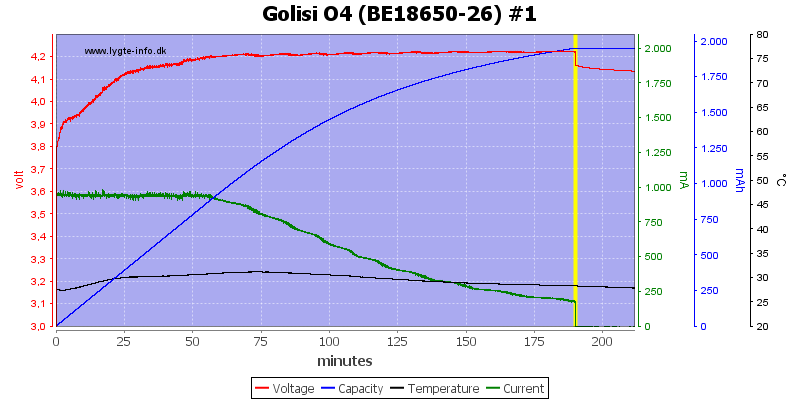
The older cell reach CV phase fairly quick, it is charged fine.
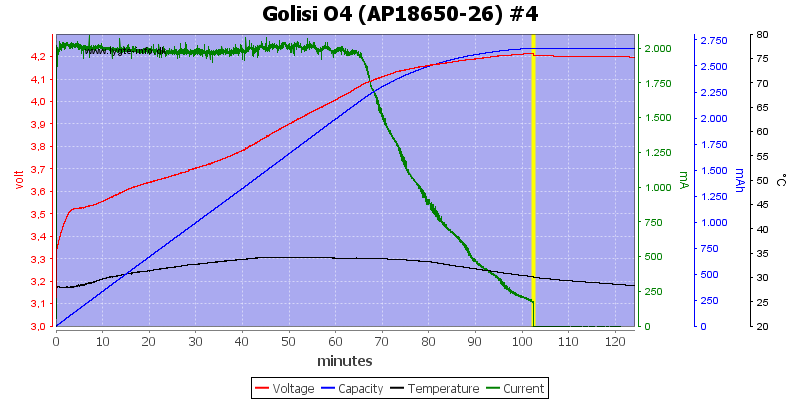
This high current cell is charged fairly fast in the 2A slot.
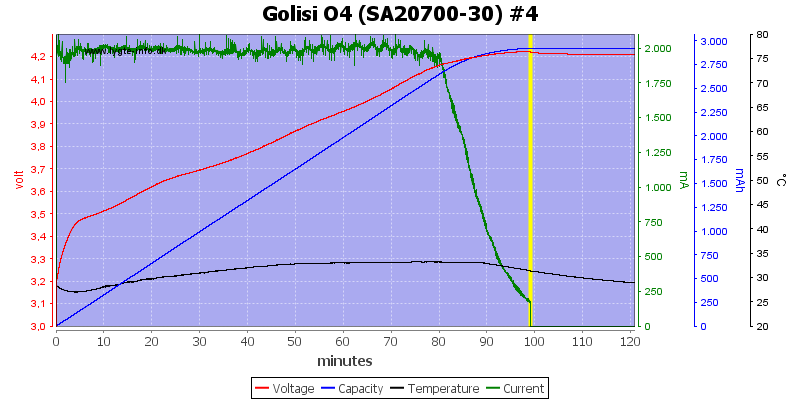
The same with this larger cell.
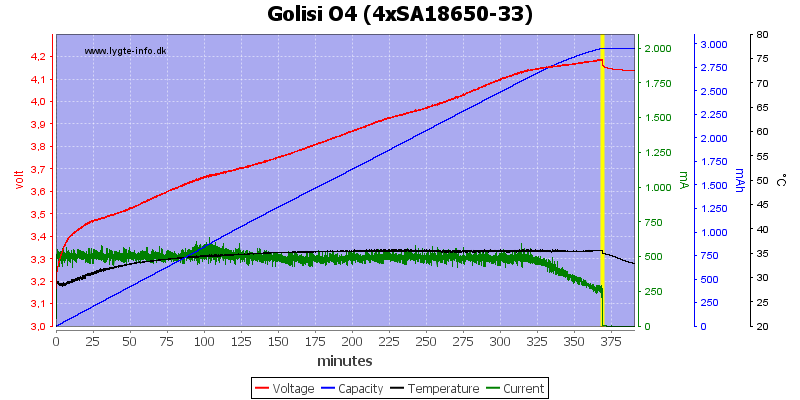
With four cells in the charger the current is reduced to 0.5A for all slots.
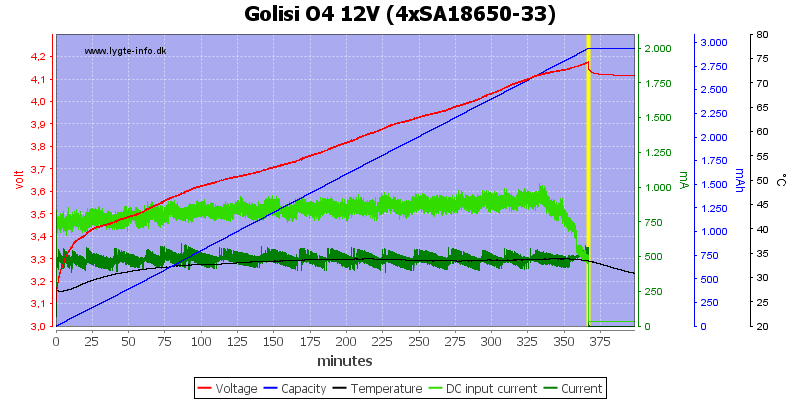
When powered from 12V it needs about 1A to charge four cells. The termination is a bit early, it may be because it has a time limit on the charging.
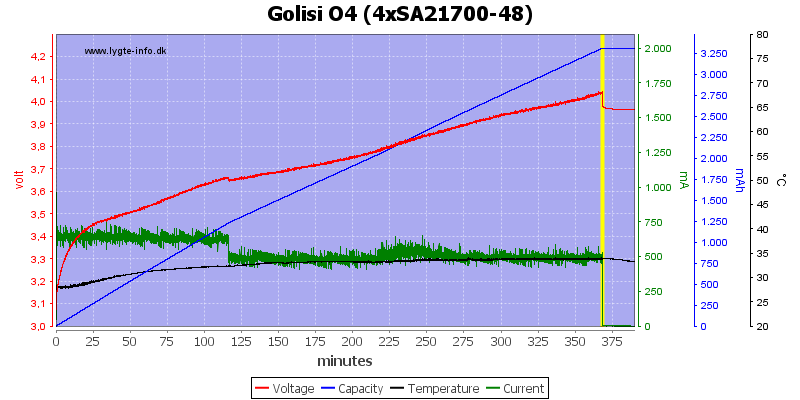
To verify that I found 4 batteries with more capacity and charged them, one of the batteries did have some problems with the connection, but at 120 minutes it did connect (Fitting four 21xxx batteries in the charger is a bit tight).
As can be seen the charger stopped at the same time, but the batteries had only reached 4.03V, this basically confirms it is a time limit.
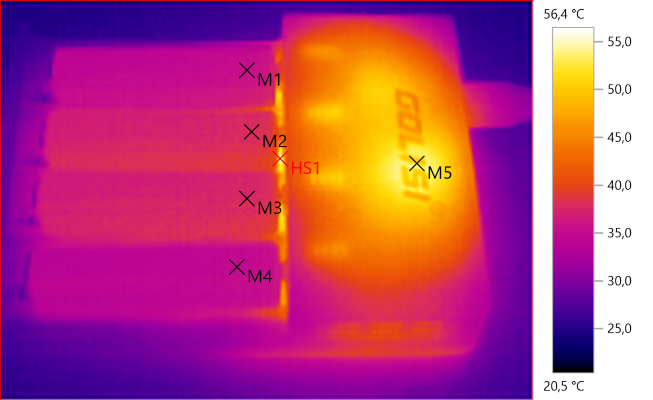
M1: 35.5°C, M2: 37.9°C, M3: 37.6°C, M4: 35.0°C, M5: 51.8°C, HS1: 56.4°C
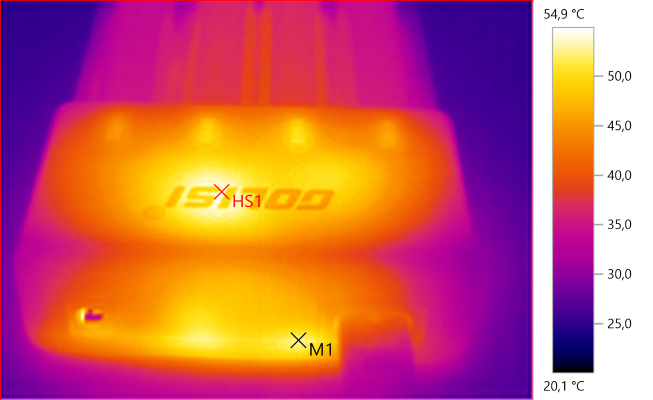
M1: 52.7°C, HS1: 54.9°C
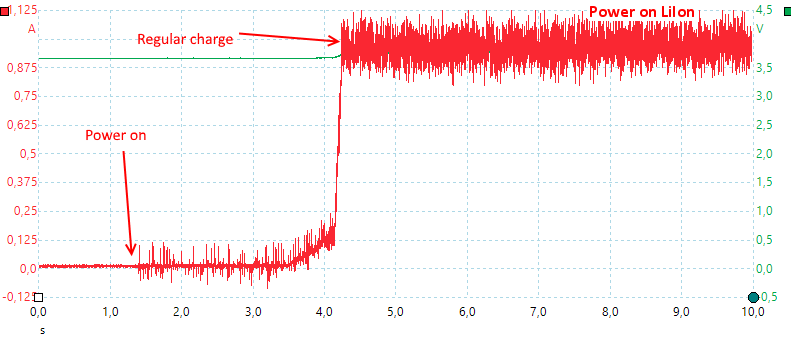
The charger needs about 3 seconds to start.
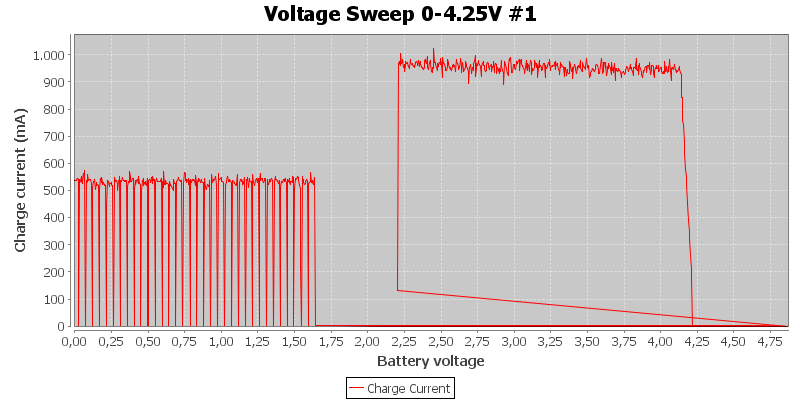
The charging profile with both NiMH and LiIon charging for slot #1.
[size=+1]Charging NiMH[/size]
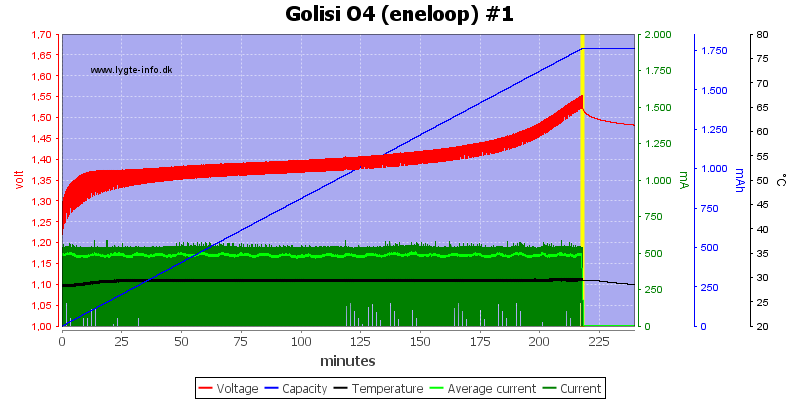
The charger chargers with 0.5A and uses voltage termination on this cell, but without any top-off charging.
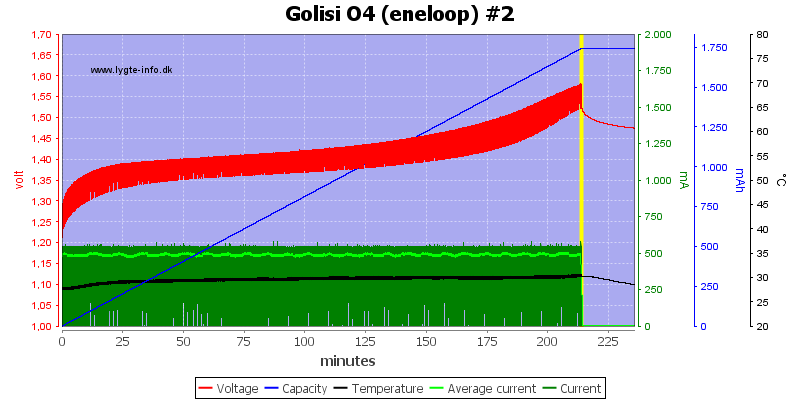
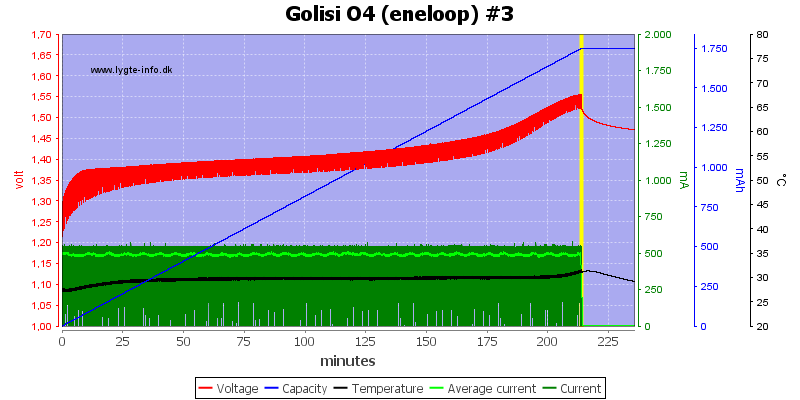
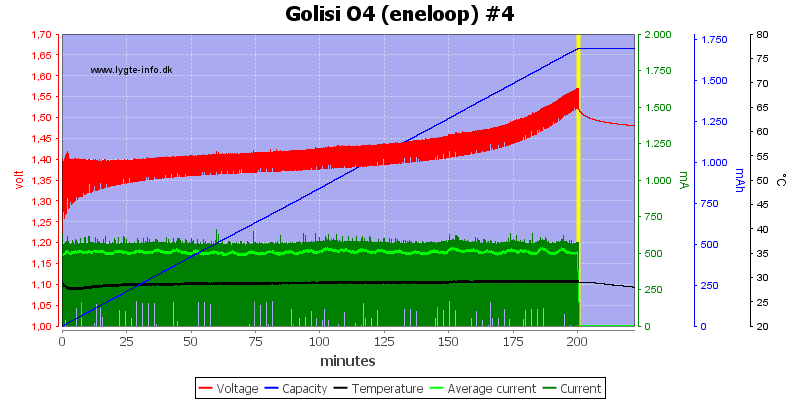
The other 3 slots are similar, there is no 2A slot with NiMH.
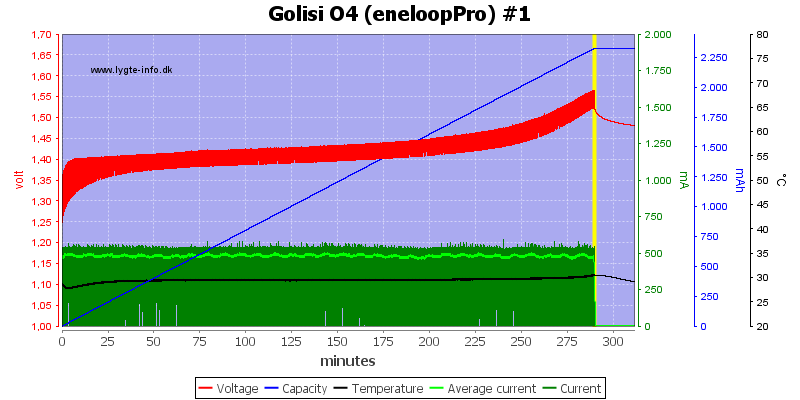
The same with the larger cell.
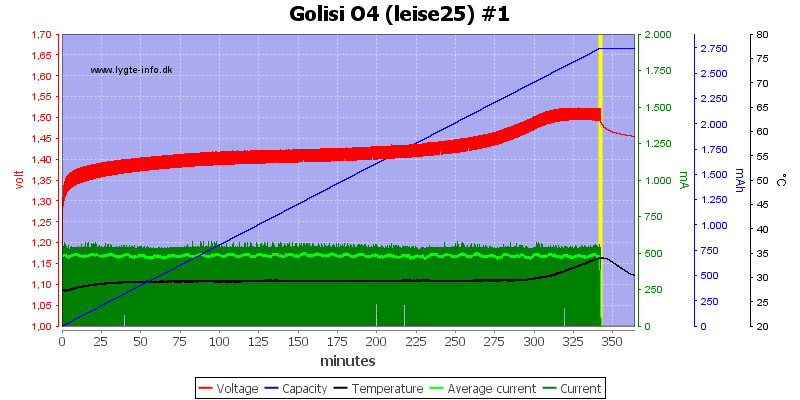
This cell has lower voltage and is terminating on -dv/dt.
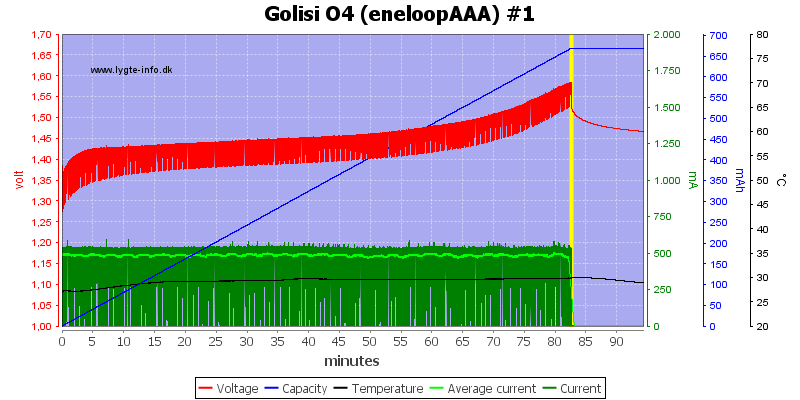
Again voltage termination.
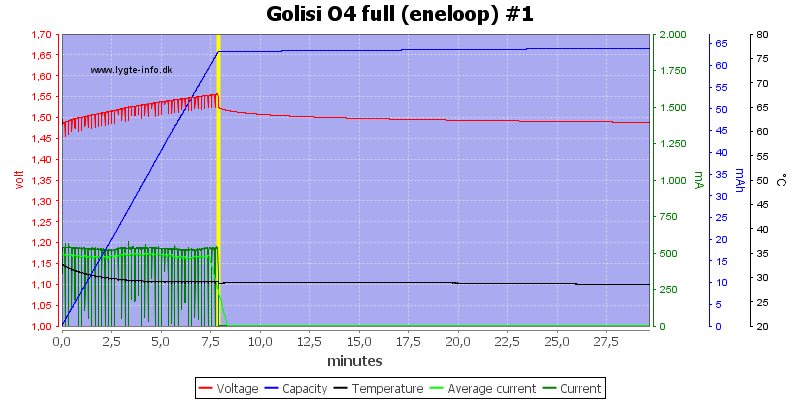
The full eneloop is detected in about 6 minutes.
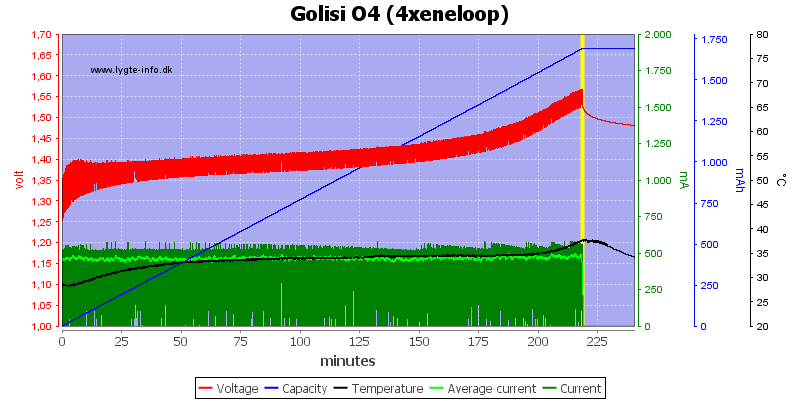
With four NiMH cells in the charger the current is still 0.5A
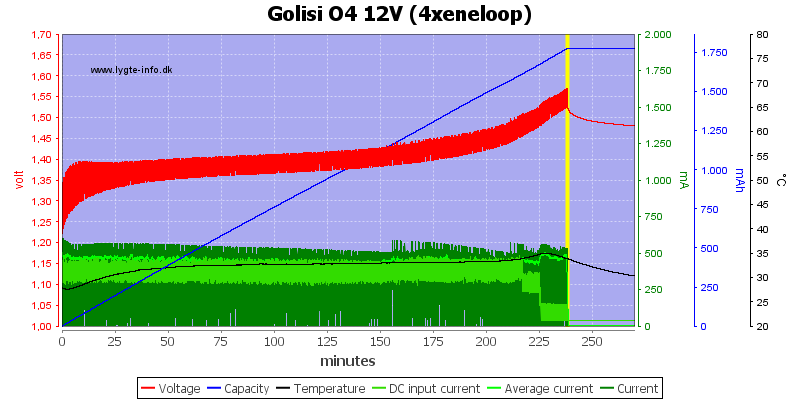
The charger needs about 0.5A from 12V to charge four NiMH.
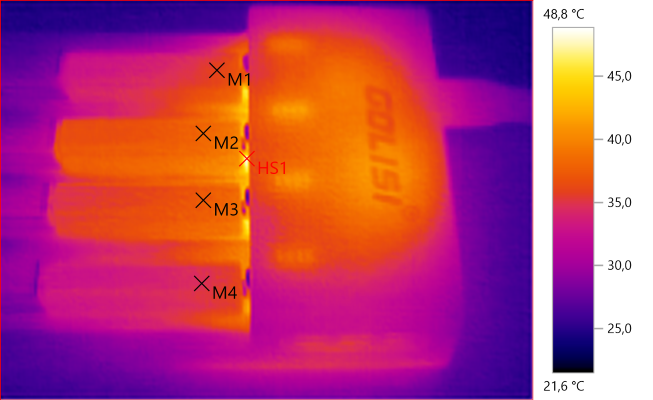
M1: 35.8°C, M2: 38.0°C, M3: 37.1°C, M4: 34.7°C, HS1: 48.8°C
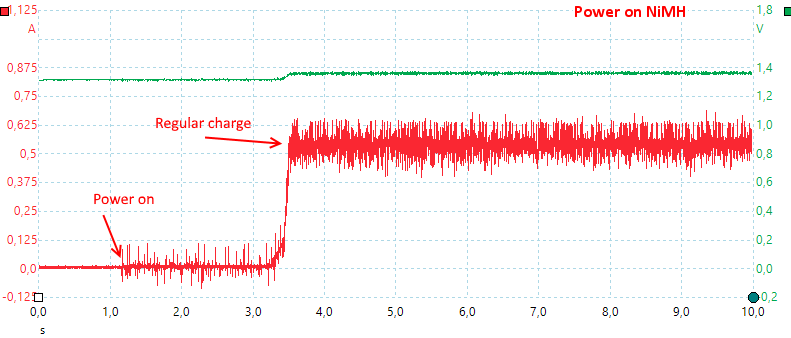
NiMH needs about 3 seconds to start.
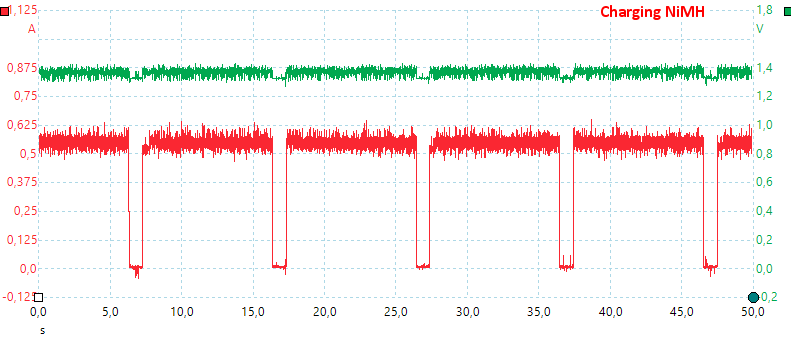
As usual NiMH charging will check the voltage with current turned off.
Testing with 2830 volt and 4242 volt between mains and low volt side, did not show any safety problems.
[size=+2]Conclusion[/size]
This charger is very simple to use, you just have to put the batteries in, this also means that current selection is fairly limited. With LiIon you can select between 1A and 2A for a single cell, depending on slot. With 1A being the minimum LiIon current this means the charger is bad for small cells. Due to the time limit in the charger when charging four LiIon batteries with 3000mAh or more, they may have to get two charger cycles to be full (The second will not take very long short).
I will rate it as a fairly good and simple charger.
[size=+2]Notes[/size]
The charger was supplied by Golisi for review.
Here is an explanation on how I did the above charge curves: How do I test a charger



A simple 4 channel universal charger from Golisi.




It arrived in a cardboard box, with some specifications on.

Inside the box the charger was in a pouch.

The box included the charger, a mains cable, a pouch and the instruction sheet.

The charger has universal mains (110-240VAC 50/60Hz) and a 12V input on the back.

The user interface is four bars of 3 leds showing the charge state. When charging one led will flash and all will be lit steady when batteries are full.

One slot is rated for 2A charge current, the other for 1A.

On the bottom of the charger there are specifications.


The slots uses the classical slider construction and it works fine.
The slots can work from 32mm to 71mm. This covers unprotected batteries, but some protected will be too long.












The charger can handle 70 mm long batteries including flat top cells.
The charge current for 1 cell is 1A in slot #1, #2 and #3, this is rather high for small cells (Slot #4 is 2A).
[size=+2]Measurements[/size]
- Discharge LiIon battery with 0.3mA when not connected to power.
- When power is connected with a full battery, it will charge with about 0.5mA.
- Below 1.6V the charger will assume NiMH
- Above 2.2V the charger will assume LiIon.
- For LiIon the charger has a total of 2A, that is distributed between the used slots.
- Slot #4 is the only slot that will use 2A, the other are limited to 1A.
- Charger will not restart when voltage drops.
- It will restart charging on reinsertion of the battery or power cycling.
- Power consumption when idle without battery is 0.2 watt.
[size=+1]Charging LiIon[/size]

Slot #1 will charge with 1A when it and none or one other slot is used. The curve is a CC/CV with about 140mA termination.



The next two slots looks similar with 1A current, the 4 slot uses 2A charge current.


These two cells looks fine.

The older cell reach CV phase fairly quick, it is charged fine.

This high current cell is charged fairly fast in the 2A slot.

The same with this larger cell.

With four cells in the charger the current is reduced to 0.5A for all slots.

When powered from 12V it needs about 1A to charge four cells. The termination is a bit early, it may be because it has a time limit on the charging.

To verify that I found 4 batteries with more capacity and charged them, one of the batteries did have some problems with the connection, but at 120 minutes it did connect (Fitting four 21xxx batteries in the charger is a bit tight).
As can be seen the charger stopped at the same time, but the batteries had only reached 4.03V, this basically confirms it is a time limit.

M1: 35.5°C, M2: 37.9°C, M3: 37.6°C, M4: 35.0°C, M5: 51.8°C, HS1: 56.4°C

M1: 52.7°C, HS1: 54.9°C

The charger needs about 3 seconds to start.

The charging profile with both NiMH and LiIon charging for slot #1.
[size=+1]Charging NiMH[/size]

The charger chargers with 0.5A and uses voltage termination on this cell, but without any top-off charging.



The other 3 slots are similar, there is no 2A slot with NiMH.

The same with the larger cell.

This cell has lower voltage and is terminating on -dv/dt.

Again voltage termination.

The full eneloop is detected in about 6 minutes.

With four NiMH cells in the charger the current is still 0.5A

The charger needs about 0.5A from 12V to charge four NiMH.

M1: 35.8°C, M2: 38.0°C, M3: 37.1°C, M4: 34.7°C, HS1: 48.8°C

NiMH needs about 3 seconds to start.

As usual NiMH charging will check the voltage with current turned off.
Testing with 2830 volt and 4242 volt between mains and low volt side, did not show any safety problems.
[size=+2]Conclusion[/size]
This charger is very simple to use, you just have to put the batteries in, this also means that current selection is fairly limited. With LiIon you can select between 1A and 2A for a single cell, depending on slot. With 1A being the minimum LiIon current this means the charger is bad for small cells. Due to the time limit in the charger when charging four LiIon batteries with 3000mAh or more, they may have to get two charger cycles to be full (The second will not take very long short).
I will rate it as a fairly good and simple charger.
[size=+2]Notes[/size]
The charger was supplied by Golisi for review.
Here is an explanation on how I did the above charge curves: How do I test a charger

